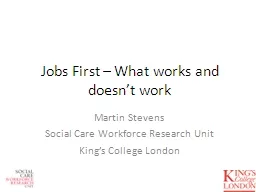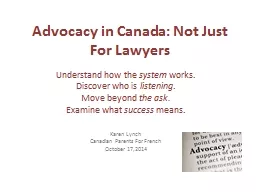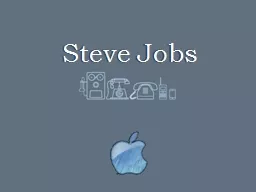PPT-Jobs First – What works and doesn’t work
Author : danika-pritchard | Published Date : 2016-05-05
Martin Stevens Social Care Workforce Research Unit Kings College London Introduction Background Aims and methods Emerging findings Context Culture change Implementation
Presentation Embed Code
Download Presentation
Download Presentation The PPT/PDF document "Jobs First – What works and doesn’t ..." is the property of its rightful owner. Permission is granted to download and print the materials on this website for personal, non-commercial use only, and to display it on your personal computer provided you do not modify the materials and that you retain all copyright notices contained in the materials. By downloading content from our website, you accept the terms of this agreement.
Jobs First – What works and doesn’t work: Transcript
Download Rules Of Document
"Jobs First – What works and doesn’t work"The content belongs to its owner. You may download and print it for personal use, without modification, and keep all copyright notices. By downloading, you agree to these terms.
Related Documents














